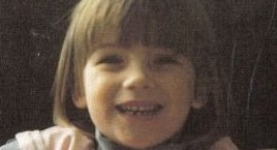
This is a list of cases of young children in the Netherlands who spoke of having lived a previous life. Most of the cases were collected and documented by Athanasia Foundation, mainly by Athanasia’s main researchers Titus Rivas and the late Anny Stevens-Dirven (1935–2016) (known as Anny Dirven), and have been published in articles and books. The list represents the majority of known Dutch cases but is not comprehensive.
- Introduction
- Rozemarijn
- Jesse
- Célina
- Kees
- YK
- Emily A
- Rik de Vries
- Marcel
- Mrs De K-V
- Angela
- Annet van de K
- Jojanneke M
- Myriam R
- Jan
- Nicky Meershoek
- Lilian’s daughter
- Carlijn
- Robin Wieggers
- Mariëtte Dijksma’s daughter
- Marjan’s Son
- B Koot
- Vera Molenaar’s Son
- EJ Vermeulen
- Bo Monsanto
- Brian
- Mrs I de V’s daughter
- Tim
- A case studied by Joanne Klink
- Ms IH
- Christina
- Bas Steman
- Literature
- Endnotes
Introduction
Cases of the Reincarnation Type (CORT) are very likely under-reported in the Netherlands, as in other European countries, because of obvious cultural factors. Most Dutch people do not believe in reincarnation and tend to suppress anomalous experiences in general. This is reflected by the fact that most respondents prefer to use a pseudonym or initials rather than their real name.
The majority of these cases remain unsolved, in that it was not possible to find a previous personality, due to a lack of specific detail within the child’s statements. Nevertheless, many appear to include paranormal details, especially in terms of anomalous knowledge of the past.
Furthermore, it is clear that Dutch CORT possess the same basic structure as cases studied by Ian Stevenson and other researchers all over the world. This strongly suggests that they represent the same phenomenon: memories of real past incarnations.
Rozemarijn
Athanasia researchers Titus Rivas, Anny Dirven, and historian Peter van Wenzel, studied the case of Rozemarijn (pseudonym) in 2001 and 2002.1 In the eighth month of her pregnancy, Rozemarijn’s mother Christine had an announcing dream that included contact with a shamanistic priestess, leading her to give her daughter a (real) Celtic name.
Rozemarijn was a silent child but quick in her motor development. She also seemed ‘boyish’, both physically and psychologically. When she was about two or three years old, she spontaneously told her parents about a previous life as a male sailor. Her story seemed remarkably realistic. Rozemarijn often drew the ship she said she sailed in.
She also mentioned the word moekille (Dutch spelling), a pointed walking stick that was also used as a weapon. The ship sailed to la Garoonya or Karoonya (English spelling) to pick up poor families and take them to a harbour with palm trees, on an island. She also mentioned the name India in this respect. There were mountains in the background and only a few small shops. The families were no slaves and they were fair-skinned. Sometimes the ship moored illegally. On the island she sometimes slept in filthy huts, but the inhabitants were relaxed and easy-going.
A noticeable skill that might be related to her remembered life as a sailor was an unlearned agility in climbing, which she exhibited from a very young age, never showing fear of heights.
The Athanasia team established that in the nineteenth and early twentieth century la Coruña (which phonetically is close to la Karoonya) used to be an important harbour for migration to the Spanish colonies sometimes referred to as las Indias, including Cuba, an island with palm trees. The word moekille can be related to makila, originally a Basque pointed walking stick which was also used as a weapon (fig. 1) The makila had become known in the Galician region of La Coruña through the pilgrimages to Santiago de Compostela.
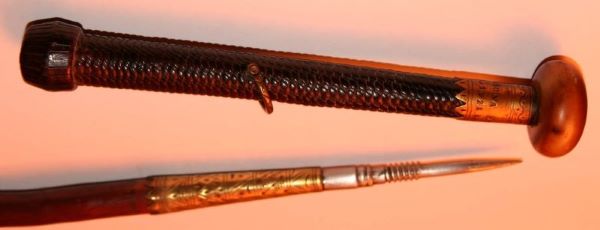
Fig. 1
There also appears to be a link between Christine’s announcing dream about a shamanistic priestess and La Coruña. This city was originally founded by the Celtic people of the Brigantes and known as Brigantia.
Jesse
In 2019, Titus Rivas participated in a Facebook group around a Dutch-language book about postmortem survival, which he had written with Han Kuik. In September 2019, a group member Linde (pseudonym), shared a remarkable experience she had had with her son Jesse (pseudonym).2 Rivas subsequently acquired more details from Linde.
In 2001, Linde was driving her car together with two-year-old Jesse and his older sister. Jesse suddenly started talking about a previous life and told her that he had been married. He had been in an aerorplane together with many other men. They all had to jump out of the plane, but his parachute would not open, so he died. He was serious about his memories and got annoyed when his mother did not immediately understand what he was saying.
Linde sees a clear connection between these statements and a recurring nightmare that tormented Jesse almost every night. He appeared to be in agony and it seemed he tried to do something peculiar between his bed and the wall.
Célina
In 2004, a Dutch mother named Natascha participated in an online investigation led by Mary Remijnse and Bram Maljaars of Stichting Spirituele Ontwikkeling (Foundation for Spiritual Development). Natascha’s story about the past life memories of her daughter Célina warranted a thorough investigation by Athanasia Foundation.3 Titus Rivas and Anny Dirven visited Natascha and Célina in 2004 when the girl was three and a half, and also talked to Natascha’s husband René. The family has a mixed ethnic background, consisting of Dutch, Surinamese, Indonesian, Spanish, and Roma (‘Gypsy’) roots.
Célina appeared to recall a previous life as her own great-grandmother, ‘grandma Jeanne’, her maternal grandmother’s mother. When she was one and a half, she spoke of a certain red Alfa Romeo that she said was her father’s car. Remarkably, her father René had owned such a car before her birth.
One day, when Célina was two, Natascha told her about the way she and René had met and what their wedding had been like. Célina said: ‘I was there too’ and ‘I was your grandma’. Grandma Jeanne had died more than a year before Célina was born.
In 2004, Célina remarked that unlike the plastic flowers they had at their home at that moment, the ones at the wedding had been real flowers. She knew, because she had been there.
On another occasion, Célina asked Natascha: ‘I’m your baby, aren’t I?’ Natascha confirmed this, and Célina added matter-of-factly: ‘Grandpa Henk [Grandma Jeanne’s son] is my baby.’
Célina also showed some behaviour that was reminiscent of that of Grandma Jeanne. For instance, she immediately found her way at her aunt’s place the first time she went there and immediately felt at home. It used to be a house that grandma Jeanne had really liked to visit and she had often done so.
Furthermore, Célina showed a strong aversion to Grandpa Ger, Jeanne’s husband. In 2003, she even refused to visit him, and she did not want to give him a kiss. She looked angry whenever she had to deal with him, and wanted to leave as soon as possible.
This corresponds to the problematic relationship between Grandma Jeanne and Grandpa Ger, a difficult character who suffered from depression, which led to a destructive drinking habit. Before Jeanne died she had declared that she would have applied for a divorce if she were younger.
Célina’s behaviour contrasted with that of her mother, who had a good relationship with Grandpa Ger.
She also showed other traits that had characterized Jeanne, such as leadership qualities, a caring attitude and creativity.
Kees
In February 1997 the Athanasia Foundation was contacted by a Mrs Marja M-V, who had been asked by theologian Joanne Klink, author of an important book on Dutch CORT, to tell them about her son’s memories of a previous life.4
She wrote Titus Rivas that from the age of about two her son Kees (pseudonym) had repeatedly shouted, ‘My heart stopped beating, then I went growing in the tummy and then my heart started beating again!’ He was beaming with joy and threw his hands up in the air to express his delight. He repeated this ritual about twice or three times a week for months in a row. It was only when he had reached the age of three-and-a-half to four that he could formulate what he meant by this enigmatic exclamation.
Mother and son were sitting on his bed together when he told her that he had lived before. He was called Armand then, and was not very old when he died, but not very young either. To his mother’s surprise, he pronounced the name Armand with the typical French nasal sound. He had a girlfriend and they were engaged to get married.
Next, Kees described a battlefield on which he was threatened by tall, strong and terrifying macho-men he termed ‘he-men’. They had already killed all of his friends. He had laid on his belly and held a gun in his hands. All of a sudden, he was hit in the back and his heart started beating in a very irregular pace. He was overcome by fear. Kees told his mother that he had seen the enemy getting closer to him and hitting him a second time.
When Kees was about seven, he added details about what happened to him after he died. An angel came for him and took him to God who was pure goodness, the Big Light, and humour [sic]. It was very difficult for Kees to describe the other realm and he told his mother it could not be recorded on a slide [sic]. There was a beautiful waterfall and flowers and trees with delicious fruits, better than all the sweets in the world. Kees resisted the angels when after a long time they urged him to reincarnate. He did not at all feel like returning to Earth. However, the angels assured him that they would stand by him and God added that it was his responsibility to lead a good life [sic].
As a young child Kees suffered from a severe phobia of dying, as it reminded him of his own painful death. It took his parents some effort to convince him that the dying process he recalled is not exactly common.
In 1997, Kees was eleven when Rivas interviewed him. He still had vivid memories of his death and even added a new element to his mother’s account. He recalled he had lost a good friend whose wife had died during labour and claimed he had taken care of his son. Kees also remembered that an angel told him this adopted son was doing well, so that he should not worry about him.
YK
In 2003, Athanasia Foundation heard about this case through Stichting Spirituele Ontwikkeling of Mary Remijnse and Bram Maljaars.
A boy (then around nineteen) whose initials are YK spoke about previous lives when he was between twenty months and four years old.5 He mainly talked about it to himself in the evening and at night. When his mother found out, she started to ask him questions about his recollections.
YK told his mother about two previous lives. One of these concerned a life ‘in the snow’. He told his mother that in this life his eyes and those of his family resembled stripes rather than ‘normal’ eyes. This specific memory evoked tenderness and joy in the boy. He also told his mother that the shoe they wore were different from the shoes he was wearing now: thick ‘bags’ made of animal skins. Sometimes, these shoes were not sufficient to be able to plough through the snow, and they had to put what seemed like big and flat ‘tennis rackets’ underneath (fig.1). YK knew these aids, which his mother used to put under his shoes for him, were not actually tennis rackets. Sometimes they used a sled, but this happened only rarely. He also recalled that the food was different and resembled a thick porridge, and that they made their own clothes out of animal skins, which they sometimes chewed to make softer.

Fig. 2
Between the ages of three and three and a half YK also seemed to recall a second past life. He lived in a small house, which his family had made from big rocks. They filled the cracks with horse dung. It was not a real house, because it contained only one room with everything in it.
They had a horse and a dog that were allowed to walk about freely. His surroundings reminded his mother of a forest, as he spoke often of bushes and trees. They were poor, but they did have enough to eat. His father often left them to go to work for long periods of time.
He remembered that his mother from this life, a beautiful woman with long black hair, at first was very cheerful, sang and danced a lot and often made jokes, but after a while, they were struck by what he described as ‘the great sadness'. This concerned the death of his older brother. This boy had been horse riding and banged his head against a thick branch. YK witnessed this accident and his mother carried his brother inside. His brother was still alive, but he died in the evening. When his father had returned from work they buried him together.
After this event, that particular life was ‘no fun’ anymore. His mother was continuously sad and neglected her younger son. YK told his mother that from then on, the good life had never returned.
Titus Rivas and Anny Dirven asked anthropologist and reincarnation expert Antonia Mills whether these memories could be related to the culture and life of Native Americans. She answered that the first account reminds her of Inuit (Eskimo) culture. According to historian Pieter van Wezel, the second account seems to refer to a life in Asia.
Emily A
This case reached Athanasia Foundation through Stichting Spirituele Ontwikkeling in the early 2000s.6
When Emily A was three, she told her mother: ‘You used to be my sister, and we used to be together all the time. And we had a different dad and mum.' She said this for several years, but had stopped talking about it when she was nine, when Athanasia studied her case.
Emily also told her mother that she had to wait before she could see her again (in this life).
Emily’s mother concluded from her statements that they had been twin sisters in a previous life. They used to wear dresses and a cap on their heads. They used to play together in a big stone house. While recalling this life, Emily often remarked to her mother: ‘I’m really glad that you’re my sister.’
When Emily was about five years old, her brothers died, and Emily told a friend of her mother’s that they first would be in heaven as little angels and then go on to other people.
Reincarnation had not been a topic of conversation in their family, even though both her parents actually believed in it.
Rik de Vries
This case reached Athanasia through an online inquiry conducted by Stichting Spirituele Ontwikkeling.7
Mrs Jolanda de Vries told Anny Dirven and Titus Rivas that her son Rick had been having conscious memories of a previous life when he was around two and a half years old. The memories had remained for just a few months.
One night Rik left his bed because of very noisy fireworks in the distance. He was in tears and kept repeating that their house would be ruined and that he would die again. He was frightened and told his parents that they had been shooting and a bomb had fallen on his house. He had then been a big man with a wife and children. He had tried to get his children out of bed to take them to a bomb shelter, but he did not succeed, because the bomb had already fallen on his house.
He later on added that his memories concerned a distant place. Historian Pieter van Wezel remarks that this life must have occurred during the twentieth century in the bombing of civilian targets.
Rik liked to play at being a soldier, as if that could help him deal with his traumatic memories.
Jolanda does not believe that Rik’s memories originated in any television programme.
Marcel
Marcel is a gifted philosopher, a one-time fellow student of Titus Rivas. When Rivas told him about his interest in reincarnation research, Marcel shared his own experiences suggestive of reincarnation.8
When Marcel was a boy of about three, his father died. His mother noticed that shortly afterwards he commented on this loss while playing on his own, speaking to himself as follows: ‘One day my father will be born again as a baby. But what will I get from that? He won’t be my father any more!’, after which he went on playing again.
Two years later, Marcel repeatedly painted and drew scenes of a beach, which seemed unmistakably filled with military vehicles and weaponry. His mother, who confirmed the accuracy of everything Marcel told Titus Rivas, had kept some of his drawings and she showed them to Rivas. They can hardly be interpreted in a different manner.
During puberty, Marcel experienced images that appeared to be memories of being a (possibly American) soldier shot in battle.
Mrs De K-V
Mrs De K-V. was a handicapped elderly lady when Titus Rivas first met her. She told him that from 1938 (when she was in her teens) until 1988 she had had recurring dreams in which she wore traditional clothing and a small old-fashioned hat.9 She felt that she was between eighteen and twenty years old. She was located in some kind of ‘kitchen’ of a big house and stood near a broad staircase that led upstairs. Outside she could see trees. She appeared to be on an estate or large farm.
Mrs De K-V got the impression that she belonged to a rich family who had acquired their wealth through hard labour. It was wartime and it seemed that she had killed a soldier who had constituted a threat to her family. The soldier belonged to the enemy, but not necessarily to a foreign power. She killed him with an axe or similar metal utensil after the man had raped a younger girl, possibly her sister. The family seemed to have buried the soldier’s body. She heard or saw that a ‘military escort’ was arriving and she was waiting for them to come with her heart beating in her throat. Her last thought in the dream was that everything would end if they found out. At this point in the dream she would always wake up.
Her daughter confirmed to Rivas that Mrs De K-V had repeatedly told her about the recurrent dream, long before the latter had reported it to us. As far as Mrs De K-V could remember, she had not seen any films or read any books that might have been the cryptomnesic source of her recurrent dreams. The dreams struck her as unusually life-like and realistic.
Angela
In 1997, Athanasia Foundation was approached by the parents of a girl called Angela who had had a recurring nightmare when she was about two or three years old.10 At first she would not tell her parents the subject of the dream. She woke up crying between 11 pm and 1 am and felt sweaty and anxious. Her parents reassured her, so that she went back to sleep after a while.
When she was three, Angela finally told her mother that in the dream there were men chasing her and shooting at her with guns. She said: ‘I see myself lying down and they are thinking: she’s dead. But I’m not dead. They think I am, they don’t see me. And then they set me afire.’
A few days later when Angela had the same dream again, her father asked her to describe the surroundings in the dream. Her father identified the description given by Angela with an African environment, possibly during the Boer War. They once intentionally left a book opened at a page about this war lying on the table and Angela claimed to recognize the pictures in it, making comments on hats and guns. She was very emotional while doing so.
She was also afraid of hot temperatures, both when taking a bath and when having a meal. The dream recurred several times more, but gradually disappeared, after Angela was repeatedly reassured by her parents.
When her parents contacted Athanasia Foundation, Angela, a teenager by now, could not recall any images of the dream. Angela’s parents did not believe in reincarnation when she told them about her dream, and they are certain that they never told their daughter about previous lives or gave her detailed graphic descriptions of war scenes.
Annet van de K
Annet van de K, a girl of fourteen, approached the precursor of Athanasia Foundation, the Foundation for the Scientific Study of Reincarnation (FSSR). on 26 May 1986.11
When Annet was five years old, her grandfather died and she tried to comfort her mother, saying it was not so bad to die, as she had died once herself. She added that she used to have another mother who resembled one of her aunts in the present life and lived in a house with a bay window. It was wartime and she was killed by a man with a flat hat and a gun, who had shot her while she was standing in the bay window (fig.3). She was hit at a spot where she now has a round birthmark.
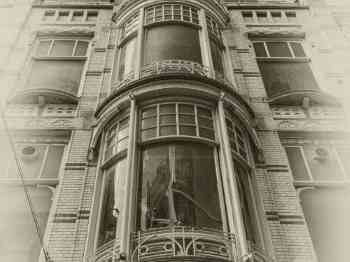
Fig. 3
Titus Rivas and Esteban Rivas of the FSSR interviewed Annet's mother, her brother, and several aunts and confirmed that Annet told at least these elements of the story, though some relatives added more details.
Her mother was not at all comforted by this story and told Annet to stop talking nonsense, as she certainly did not believe in reincarnation herself. Annet answered that even if they did no believe her, her story was true.
Jojanneke M
In 2002, Athanasia Foundation was approached by a lady from Limburg who told them about an incident that often happened when, with her children, she visited the cemetery where her uncle was buried (he had recently died of leukaemia).12
On these occasions one of her daughters, Jojanneke, who was about three at the time, visited the graves of young children. When her mother asked why she did this, she always replied: ‘I used to be a mother too and my baby is buried somewhere in this cemetery.’ She always gave the same answer. Her mother did not notice any other statements about a previous life.
Myriam R
Myriam R was aged 31 when Athanasia Foundation’s team met her at a so-called ‘paranormal fair’ in 1996.13 Born in Leiden, Myriam claimed that as a young child of about three or four (around 1968) she spontaneously remarked that her previous mother used to wear the same kind of dress as her present mother. She asked her mother to take it off, as it reminded her of her unpleasant past life in a desert-like environment.
In her previous life, she had to take care of her brothers and sisters and look for food in the desert. One day, she had to fetch some water at a well, and she died in a sandstorm.
Though unverifiable, her memories were quite extensive. For instance, Myriam recalled the appearance of her parents, a wooden house with a porch (fig.4), and the respect she had felt for elderly people.

Fig. 4
A friend of Titus Rivas, Gerard M, was in New Mexico for some time as part of a social project and he was struck by Myriam’s story, which he said reminded him strongly of living conditions in the deserts of this state. The wooden porches Myriam had described were common there.
Gerard participated in Athanasia’s research during a visit to Myriam’s home in Alphen aan den Rijn. As a Roman Catholic he did not believe in reincarnation himself, but was struck by the lack of sensationalism in Myriam’s account. Months elapsed between the several interviews we conducted with Myriam and her story always contained the same elements.
Athanasia contacted Myriam’s mother, who confirmed her story with no discrepancies: Myriam was three to four years old when she made her statements; she compared her dress to that of a previous mother; told her about an unpleasant life in a desert; said she had to take care of her brothers and sisters and look for food; and said she died in a sand storm.
Myriam also claims to have memories of an intermission period after her life in a desert-like environment. She found herself in a beautiful afterlife. During a Caesarean section operation in the present life, she had a near-death experience which strongly reminded her of these memories of an intermediate state.
Myriam’s Roman Catholic parents certainly did not believe in reincarnation when their daughter shared her memories of a past life with them.
Jan
In 2004, a woman called Marieke shared her experiences with Stichting Spirituele Ontwikkeling, which put her in touch with Athanasia Foundation.14 Marieke told Anny Dirven and Titus Rivas that her son Jan spoke about his previous life from the age of two. Out of the blue, he said things like: ‘My sister is in Heaven. Her name is Nora,’ and ‘When I was big, when I was with my other mummy.’
In this life Jan did not have a sister, and whenever he talked about Nora he became sad.
Marieke described her son as a real ‘little thinker’ and very sensitive. He reflected on many subjects, including dying. She did not have the impression that he was just imagining things.
Nicky Meershoek
Stichting Spirituele Ontwikkeling shared this case with Athanasia Foundation, after they had been approached by Peter Meershoek.15
In the summer of 2004, the Meershoek family went for a holiday to Turkey for five weeks. According to Peter Meershoek, their normally sweet three-year-old daughter Nicky showed strange behaviour during the first two weeks of this vacation, ignoring or resisting almost anything her mother Karin asked her to do.
Peter decided to take Nicky for a swim and asked her why she was acting like this. Nicky replied: ‘When I used to be big, and mummy was still little, she would never listen to me either.’
In December 2004, during the funeral of Prince Bernhard, she asked her parents when the prince would come back.
Lilian’s daughter
Responding to an online inquiry of Stichting Spirituele Ontwikkeling, Mrs Lilian van D-D. got in touch with Athanasia Foundation’s team.16 She wrote them that in the early 1990s, her two-year-old had told her: ‘I used to be your mother.’ What made this impressive for Lilian, was that at the time the girl had been barely able to speak.
The child also seemed to feel an intense longing for her maternal grandfather, who had died nineteen years before her birth. She sometimes even cried over him for no apparent reason.
When the girl was eight she missed her grandpa very much and remarked: ‘Maybe I used to be your father myself.’ She often said that Lilian was ‘hers’ and often felt jealous of her own dad. What makes this remarkable is that her maternal grandfather had been very possessive of his daughters.
Also, the girl felt a strong affinity with Indonesian culture. As a toddler, she preferred eating rice straight from the cooking pan, without anything added to it. It appeared to be a real delicacy for her. Her grandfather was born in the former Dutch Indies, but her own family were raised in an exclusively Dutch manner and rarely consumed Indonesian food.
Lilian’s daughter only spoke about her previous life for a short period.
Carlijn
In 2004, a Dutch mother told Athanasia Foundation about her daughter Carlijn, via an inquiry on the website of Stichting Spirituele Ontwikkeling.17 The girl had been six years old when she started talking about her previous life. She told her mother how many brothers and sisters she used to have and their ages (from two and a half to twelve), her mode of death, their way of life, and her experiences with pony riding.
Her name was Surea, Surija or Suraya. She was a dark-skinned girl with long black hair from either England or Tilburg in the Netherlands.
She told her younger brother that she used to have another dad and mum, that she had died when she was four and had come to her present parents.
Carlijn also said that they had lived in a shed, amidst wooden houses. The streets only consisted of sand. There were horses all around and she was allowed to ride a pony from the age of four. Her birthday was 8 July and she died during the winter. They did not have central heating, but made a fire of logs outside, and sometimes inside the house as well. They used to have uncut bread, which her mother cut with a knife. All the people looked dark and had dark hair. She believed she had been born about forty years before the present life started.
In the past life she had to walk to school on her own and noticed someone digging in the sand. She climbed into the hole he had been digging and a lot of sand fell on top of her, making it impossible for her to get out. Then everything went black and she came to her present family.
She also told her mother: ’If you think of it, I’m older than you, and even older than grandma, because I was born before. The thing was that I did not live very long, for only four years. Hopefully I will be able to live a bit longer this time.’
She asked her mother if everyone had a previous life, something which had never been discussed before within her family. Her parents did not believe in reincarnation, although her mother was open to the idea. Her mother confessed to Athanasia Foundation that she still was sceptical about her daughter’s statements.
According with her remembered mode of death, the girl had a phobia of choking, which expressed itself in relation to water and swimming, but disappeared following swimming lessons. Surea, Suriya and Suraya are girls' names common in the Islamic world and India. If the territory in her past life belonged to the British Empire, she could have associated it with ‘England’. In that case, ‘Tilburg’ could simply be an association with a Dutch place in her present life.
Robin Wieggers
Nicole Wieggers was a respondent to an online survey by Stichting Spirituele Ontwikkeling.18 She got in touch with Athanasia Foundation in 2004 about her son Robin who had talked about a previous life when he was three and a half. He was still talking about it when he was four.
Robin often said things like: ‘When I was big and you were small’ and ‘First you die and then you come back to life’. He also said: ‘My other mum died, that is why I’m living with you now. My mother used to be good to me too.’
About the way he died, he told his mother that he was shot in his belly. This corresponded with an unexplained tummy ache that he had ever since he was born.
Robin used to explain to his little nephew that you get reborn after you die and asked him what he planned to do when he would be a baby again. The nephew did not understand what Robin was talking about. He got angry at Robin and said that he was not a baby anymore.
Mariëtte Dijksma’s daughter
Titus Rivas was approached by Mrs Mariëtte Dijksma (pseudonym) in August and September 2015.19
She told Rivas that she had ‘exceptional’ daughter of three, with a remarkable personality, a high IQ, and significant talent.
The girl talked spontaneously about how she had ‘shrunk’ when she had been ten years old in a previous life and was surprised to find herself in a white body this time. The girl told Mariëtte that she had lived in a house like the ones they have in a local theme park about African culture (fig.5). She had been naked. She had been a girl in that life too, but her hair was shorter than that of an average European boy and was painted red. Her skin had been completely brown. Everyone around her was brown.
There were a lot of lions and giraffes, and children never went to school. Someone cut off one of her father’s ears, but luckily he survived this assault. Her previous mother was very unkind, but she had got a new mother who turned out to be really nice.
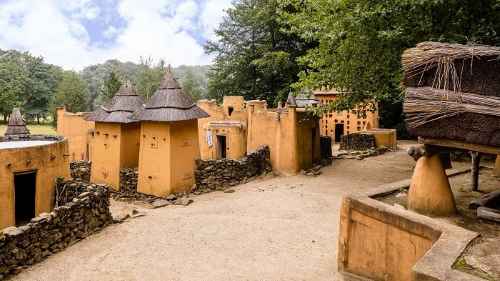
Fig. 5
She suddenly became a baby again when she was ten years old.
Sometimes, the girl would use words that sounded exotic and she also talked about a person called Kennie, who had a house with walls that were ‘as hard as stone’, and had ‘everything in it’.
The girl claimed she had died while she was having a lot of pain in her belly and that she had been ‘striped’.
Mrs Dijksma added that her daughter’s favourite animal had always been the giraffe.
A visit to the African theme park may have triggered specific memories in the child. Her parents had no special interest in Africa themselves.
Marjan’s Son
In 2002, Titus Rivas met a lady named Marjan at a paranormal fair in Enschede.20
Marjan told him that her son had described memories of a previous life when he was about three years old. He talked about ‘another mother’ and about a sister, Sjoerdje, a Frisian name that seemed rather old-fashioned to Marjan. He also mentioned that they had to wear a star (fig.6). Marjan stressed that the present family does not have a Jewish background and did not talk about the Shoah at the time.
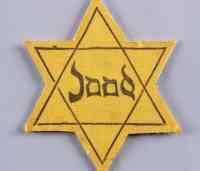
Fig. 6
The boy suffered from shocking nightmares until the age of six. He would wake up screaming and sometimes would not recognize his mother. It would take at least fifteen minutes before he would calm down.
B Koot
B Koot, who lived in Houten, sent Titus Rivas a letter about a deja-vu experience in 1968 when he was seventeen or eighteen years old.21 He was spending his holiday together with his family in Sauerland, Germany. When they were approaching the area around the Diemelsee, the environment started to feel familiar. From a certain location along the Diemelsee, he was able to literally recognize the road. He knew in advance that there would be side-road on the right that would lead to a dam and that there would be a sign leading to a place called Adorf, which he did not know in his present life.
This recognition continued for at least two to three kilometers and everything he felt he knew turned out to be correct. He had never even taken a glance at a map of the area.
Vera Molenaar’s Son
Mrs Vera Molenaar (pseudonym) contacted Titus Rivas during a paranormal fair in Arnhem in 2002.22 A correspondence followed in which Mrs Molenaar told Rivas that her son had claimed he used to live in the house of her parents. At his birth none of their relatives was living in that particular house, so he had never been inside it.
When he could speak he talked about the house whenever they drove past it.
Vera explained to Rivas that she had lived in that particular house with her parents, two brothers and a sister. Her youngest brother died in an accident when he was 21 years of age. She wonders whether it is no more than a coincidence that she had named her son after this particular brother.
EJ Vermeulen
In 2002, EJ Vermeulen of Alkmaar, then 68, wrote to Titus Rivas about imaged memories of a previous life that he had had since he was two.23 He had never told anyone until a few years before. He first shared his memories when he and his wife were visited by a pastor and the subject of an afterlife came up in the conversation. The pastor said other people had revealed similar things to him.
When Vermeulen was just two years old, he was so ill that his parents feared he was contracting meningitis. At first, he got bizarre hallucinations of faces with too many eyes. Then suddenly he experienced himself as a four- or five-year-old playing in the sand. To his left he saw a forest edge, and on his right there were round huts. He was sitting in front of his family’s open hut, and there was no one inside, when a tiger suddenly grabbed him by his neck and lifted him up in the air. He was still able to scream, but that is where his imaged memories end.
Vermeulen showed Rivas a photograph of a well visible, dark birthmark that seemed to correspond to the spot where he had been wounded by the tiger.
Bo Monsanto
Near the end of 2002, Mrs Toinette Loeffen contacted Athanasia Foundation at Nijmegen.24 Her son Bo suffered a stroke at or shortly before the moment he was born. Normally, this should have led to severe handicaps, but Bo (then about ten years old) possessed unusual insights and was very sensitive.
One night, when Bo was around four, his great-grandmother became severely ill. He said to his mother: ‘When I was little, Mummy, I also died once. Then I went to Heaven and afterwards I came to Dad and you.’
After his great-grandmother had died, Bo, then five years old, added: ‘You die and you become alive again, and you die again. And when you’re dying, you will see (that you’re dying).’ Toinette did not like hearing such statements, because in those days she was not interested in spiritual matters.
Later she wrote an article about her son for the newsletter of a Dutch organization for parents with so-called Indigo or ‘New Age’ children.
Brian
In the early 2000s, Titus Rivas and Anny Dirven of Athanasia Foundation received a letter from Mrs Chantal P about her son Brian, who was four at the time.25 She told them that Brian hated it when he and his family were driving on the highway. The first time he experienced this he did not object, but the second time he panicked and yelled that he did not want to drive on the highway.
Chantal expected this to be a unique response, which he would not repeat. But from then on, Brian panicked each time they were driving on the highway.
Chantal asked him what was wrong. Brian said he was frightened and told her she needed to be very careful. She needed to get out of the way when she saw lights coming towards her.
She wondered whether he had ever been in such a situation, and he said: ‘Yes, I was, in the past.’ He was in a car with two male friends and a girl-friend when they were involved in a fatal collision in which Brian died.
Mrs I de V’s daughter
Speech therapist Mrs I de V. sent letters to Athanasia Foundation in the early 2000s about her daughter.26 When this girl was three and a half years old, she asked her mother what time it was and it happened to be half past three. She acted surprised and said that ‘her mother’ still had not picked her up. When Mrs. de V. replied that she herself was her real mother, the girl denied this.
The girl told her mother that she had been 35 years old, married, and the mother of five children. She mentioned her name, which sounded like Seelah or Sheelah. The girl also mentioned the names of her children and these also sounded Indian, such as Punjari and Kadjiva (which matches Kashiva, an Indian female name). She claimed that her former mother had lived with them in the same house, and that this mother probably would take care of the cooking for her children, now that she herself had been absent. The girl really seemed very worried.
She said she had lived in Rotterdam because that is where her husband was working.
After a while, the girl became angry and asked her mother why she did not want to take her back to her family. It seemed a serious reproach. Her mother promised to take her back, so that the girl finally calmed down.
The toddler continued to talk about this previous life for about a week and then stopped mentioning it altogether.
About a year later the girl said she no longer recalled these details anymore, except that she used to have difficulty distinguishing between her present mother and the woman with the ‘red marks’ on her head. She used the word distinguishing (Dutch: onderscheiden), which is unusual for a child of her age.
Certain behaviours appeared to be related to her memory images. She felt at home in an Indian clothing-store, seemed interested in India and Indian traditions, and liked to wear Indian clothes. On seeing a lady in an Indian dress (possibly a sari) she became emotional and said she longed for such clothes. She also preferred strong oriental perfume to Western scents, which she hated. She was also very spiritually minded.
Moreover, she generally refused to eat meat (the rest of the family were meat-eaters). Physically, she looked like a typical white Dutch girl, but psychologically she clearly was not. The girl’s mother speaks of an ‘un-Dutch grace’ while describing her.
Mrs I de V was open to the concept of reincarnation, but only found it plausible because of her own daughter’s claims. When a younger child in the family got cancer, these experiences with her daughter gave her some consolation.
Tim
In the early 2000s, Athanasia Foundation received e-mails from a Mr N about his autistic son Tim.27 Tim was seven years old at the time.
Tim only interacted with children with a similar condition, but he made statements that Mr N found insightful. When Tim was four years old, he recognized a photo of Mr N’s deceased father as a picture of his ‘grandpa’ the first time he saw it. He had never seen this grandpa before.
Sometime later he told his mother that he was currently living his ‘second life’. He went on to tell her about a past life in Germany, in which, as an adult, he tried to save a young girl, but failed, so that both of them were killed.
He also mentioned the name of his ‘first’ mother, Mina, and described her as a ‘very agreeable person’. Tim acknowledged the fact that her present mother was also very sweet to him, but in a different way. He had preferred the first mother.
Tim asked his parents what they called the ‘thing that survives death’ while the body stays here.
A case studied by Joanne Klink
The late Protestant theologian Joanne Klink (1918-2008) may be considered one of the founders of research in the Netherlands into reincarnation and memories of a spiritual pre-existence.28 She was well-known for her generally open-minded attitude. She wrote a book entitled Vroeger toen ik groot was (When I Used To Be Big) about spontaneous cases, which was also translated into German.
One of her most striking cases concerned a Dutch girl of two and a half who told her parents she used to have a dark skin. In that life she wore many bracelets, and was fond of dancing. She took care of a great number of small children and life had generally been sunny.
Shortly after making these statements, her family attended a (Dutch) Moroccan party. While returning from this party, the girl was absolutely elated and claimed she had recognized everything, because of her past life memories.
Ms IH
A Dutch young lady who wishes to be known as IH told Titus Rivas and Anny Dirven about a unique dream she had when she was about fourteen.29 She was standing by the shore of a muddy river, surrounded by trees. There was a kind of canoe propelled by a boy standing upright using a long stick. Three Asian boys were in the boat, all dark skinned with black hair, wearing only loin cloths. One of the other two boys was sitting on a bench in the boat and just staring ahead. The other boy was sitting behind him and looking at something next to her.
The dream was so vivid, that she could hear birds in the background, possibly parrots.
IH was mostly struck by the eyes of the steersman; she got the impression that they knew each other, but she also felt surprise or curiosity. It did not feel as if she were in love with him, but it seemed she did consider him a good friend. She had no feelings for the other two boys, maybe because she did not know them.
She was struck that the boys in the dream were teenagers like herself. She believed that the dream probably related to a previous life that had ended decades earlier, in the 1940s.
There seems to be a link to her father’s personal history. Her father was born in the Dutch Indies and had to do forced labour for the infamous Burma Railway, also known as the Death Railway. Her paternal grandfather always talked fondly about life in the Dutch Indies, especially about their house and the jungle filled with parrots. He carried a strong ‘Indonesian atmosphere’ about him. IH could recall many stories this grandfather used to tell.
IH rejected the suggestion that her dream might derive from her grandfather’s anecdotes rather than from real past life experiences. One of her main reasons was that she clearly was female in her dream and did not have the perspective of a man or boy.
Rivas and Dirven showed IH photographs of Indonesian and Burmese boys. She said some of the Burmese boys resembled the boys in her dream so that she cannot rule out the possibility that they had been Burmese rather than Indonesian.
Christina
Athanasia Foundation first heard about the case of Christina K (pseudonym) at a paranormal fair in Nijmegen through a friend of hers, Laura, and Laura’s mother Marijke T.30
Christina was born on 24 February 1979 in the village of Malden (Gelderland), the Netherlands, and died aged seventeen after being struck by a car. Her death occurred before her memories could be fully investigated. Nonetheless, her case deserves serious attention (fig 7).
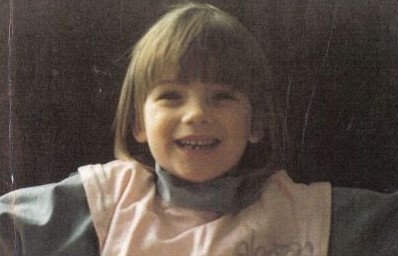
Fig. 7
Rivas met her mother Hannie K in 1998, together with Marijke T. In 2007, Hannie K, Titus Rivas and Anny Dirven travelled to Arnhem for further investigations.
When Christina was about three years old, she was afraid to go into the attic alone. She could not explain her fear. One Friday morning in 1982, when she was about three and a half, she was crying and told her mother she had had a nightmare. It was a dream about a different, big and white house with high windows, somewhere in a town. She knew she had a father and mother. She told her mother that they were very different from her. She also had more brothers and sisters than she had in the present life.
In the dream it was Easter. They were sitting at the table and her brother and sisters were quarrelling. Their parents sent them to their rooms. Her younger brother had been playing with matches and had his mattress alight. She ran to the balcony of her room and saw her mother and a fireman, who shouted at her to jump. She simply was too frightened to do so, although one or two of her sisters did. The smoke overcame her. A lady in white told her that she had died and took her through the burning house. Christina was shown several possible mothers and asked to pick one of them. She chose a woman with blonde hair who was typing at an office.
Christina’s mother said she had sometimes talked to others about the dream. Rivas succeeded in tracing a female cousin who remembered her telling her about it when the latter was around eight. Christina's sister also confirmed the main story line of the dream and the phobia she had felt for the attic.
Christina's mother Hannie K told Rivas that she had heard of a similar story of a terrible fire in Arnhem in which several children died, before Christina was born (fig.7). To test the possibility that this was the subject of the dream she took Cristina there when she was fifteen. Having arrived at the central station Christina led her straight to a white house, which she claimed to recognize. (Hannie rules out the possibility that she had told Christina about the tragedy before her daughter dreamed about it.)
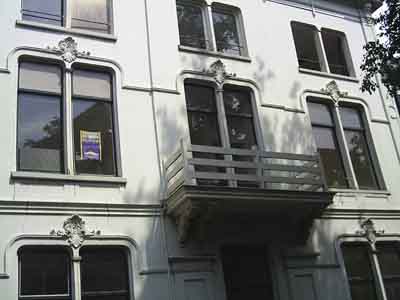
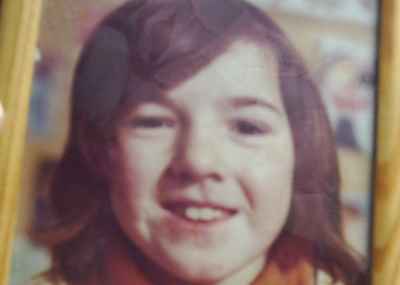
Figs. 8 & 9
In the municipal archives of Arnhem, Rivas found a record of a fire as described by Christina, at Easter 1973. Apart from minor discrepancies, her description matched the historical events. One of the casualties was called Hendrika, aged nine, who was suffocated to death by the smoke.
In 2006, Joopie Brugman, the eldest brother of Hendrika, read an online report on the case and contacted Anny Dirven. This led to a meeting in Arnhem between Joopie, Hannie, Anny Dirven and Titus Rivas. Joopie provided useful information about the family, Hendrika (‘Henny’) and the tragic fire.
Joopie had not been present during the fire, but naturally had heard all about it and had attended the funeral. More importantly, Joopie did not believe in reincarnation when Hannie, Rivas and Dirven met him. He found it difficult to believe Christina’s story. Nevertheless, he confirmed several of Christina’s statements about details not included in newspaper articles. He also found it striking that Christina had talked almost exclusively about the mother of the previous life and not about her father. It turned out his mother had remarried and Henny’s stepfather, according to Joopie, brought much hardship on the family.
According to Joopie, Henny and Christina shared many personality traits, namely:
- witty
- cheerful
- lively
- musically gifted
- spontaneous
- thoughtful
- intelligent
- compassionate
- always willing to help others
- had many friends
- often brought friends home
An interesting aspect of this case is Christina’s vision of her mother, whom she saw her as a lady with blonde hair typing in an office. Hannie told Rivas that she remembered the fire at Arnhem as having occurred sometime during the late 1960s when she was around fourteen. In fact, the records show the fire happened in 1973, when Hannie was working at an office, a time when she dyed her hair blonde.
Bas Steman
Journalist and writer Bas Steman published a curious novel in 2018, titled Morgan, een liefde. It was loosely based on memories he claimed to have had of a previous life as a Welsh soldier who perished in the Battle of Arnhem.31 As a child, Steman made realistic drawings of soldiers jumping out of aeroplanes, which recall World War II battle scenes. Under hypnosis he recalled the name Morgan Probert, and later contacted Probert’s relatives in Wales.
Steman was more interested in writing a moving literary novel about reincarnation memories than in presenting serious evidence (which explains the fictional elements in the book). However, elements of his story were confirmed to Titus Rivas by Steman's wife, film-maker Ariane Geep, and his case essentially seems authentic.
Titus Rivas
Literature
Athanasia Foundation (2005). Nieuwe Nederlandse gevallen van kinderen met herinneringen aan een vorig leven. Paraview 9/3, 18-19.
Klink, J. (1994). Vroeger Toen Ik Groot Was. Vergaande Herinneringen van Kinderen. Baarn: Ten Have.
Kuik, H., & Rivas, T. (2018). Zeker weten … er is leven na de dood! Deventer: Edicola.
Rawat, K.S., & Rivas, T. (2021). Reincarnation as a Scientific Concept. Hove, UK: White Crow Books.
Rivas, T. (1998). Kees: Een Nederlands geval van herinneringen aan een vorige incarnatie met herinneringen aan een toestand tussen dood en geboorte. Spiegel der Parapsychologi 36/1 (new ed.), 43-55.
Rivas, T. (1999). De Arnhemse brand van Pasen 1973: Herinneringen van Christina uit Malden. Spiegel der Parapsychologie 37/4, 133-52.
Rivas, T. (2000). Parapsychologisch onderzoek naar reïncarnatie en leven na de dood. Deventer: Ankh-Hermes.
Rivas, T. (2003). Three cases of the reincarnation type in the Netherlands. Journal of Scientific Exploration 17/3, 527-32.
Rivas, T. (2004). Six cases of the reincarnation type in the Netherlands. Paranormal Review 29, 17-20.
Rivas, T. (2005). Rebirth and personal identity: Is reincarnation an intrinsically impersonal concept? Journal of Religion and Psychical Research 28/4, 226-33.
Rivas, T. (2006). Reincarnation and pre-existence memories among young European children. [Lecture for the Paraquest Conference in Sale, Manchester, UK.]
Rivas, T. (2010). Nog meer bewijsmateriaal voor reïncarnatie: Tussenstand van actuele discussies over bewijsmateriaal. KD.
Rivas, T. (2011). Uit het leven gegrepen (3rd ed.). Lulu.com. [Web post.]
Rivas, T. (2015). Meisje van 3: Een vorig leven in Afrika? Terugkeer 26/30 (Autumn), 24-25; Levenslicht 44/9 (Autumn), 17-18.
Rivas, T. (2019/2020). Vroeger toen ik groot was … Kinderherinneringen aan (eerder) doodgaan: Casus uit Nederland. Terugkeer naar Levenslicht 3/4, 33-35.
Rivas, T., & Dirven, A. (2002). Nederlandse gevallen van reïncarnatie rond het millennium. [Web post.]
Rivas, T., & Dirven, A. (2004). Herinneringen van Célina. Spiritualiteit (September). [Web post.]
Rivas, T., & Dirven, A. (2005). Reïncarnatieherinneringen in Nederland: Acht casussen. Spiritualiteit (undated). [Web post.]
Rivas, T., & Dirven, A. (2007a). Vervolgonderzoek in het geval Christina uit Malden [Web post.]
Rivas, T., & Dirven, A. (2007b). Twee gevallen van herinneringen aan vorige levens uit België en Nederland. Spiritualiteit (October). [Web post.]
Rivas, T., & Dirven, A. (2009). Teruggekeerd bij dezelfde familie. ParaVisie 24 (August), 11-13.
Rivas, T., & Dirven, A. (2017). Readings about previous lives: Is there evidence for psychic knowledge of former incarnations of others? Paranormal Review 82, 20-22.
Rivas, T., Dirven, A., Remijnse, M., & Maljaars, B. (2003). Drie nieuwe gevallen van herinneringen aan vorige levens. Spiritualiteit. [Web post.]
Steman, B. (2018). Morgan, een liefde. Nieuw Amsterdam.
Endnotes
- 1. Rivas (2003. 2011).
- 2. Rivas (2019/2020).
- 3. Rivas & Dirven (2004).
- 4. Rivas (1998, 2003).
- 5. Rivas et al. (2003).
- 6. Rivas et al. (2003).
- 7. Rivas et al. (2003).
- 8. Rivas (2004).
- 9. Rivas (2004).
- 10. Rivas (2004).
- 11. Rivas (2004).
- 12. Rivas (2004).
- 13. Rivas (2003).
- 14. Rivas & Dirven (2005).
- 15. Rivas & Dirven (2005).
- 16. Rivas & Dirven (2005).
- 17. Rivas & Dirven (2005).
- 18. Rivas & Dirven (2005).
- 19. Rivas (2015).
- 20. Rivas & Dirven (2002).
- 21. Rivas & Dirven (2002).
- 22. Rivas & Dirven (2002).
- 23. Rivas & Dirven (2002).
- 24. Rivas & Dirven (2002).
- 25. Athanasia Foundation (2005).
- 26. Athanasia Foundation (2005).
- 27. Athanasia Foundation (2005).
- 28. Klink (1994).
- 29. Rivas & Dirven (2007b).
- 30. Rivas (2000, 2004); Rivas & Dirven (2007a); Rawat & Rivas (2021), 88-91.
- 31. Steman (2018).

